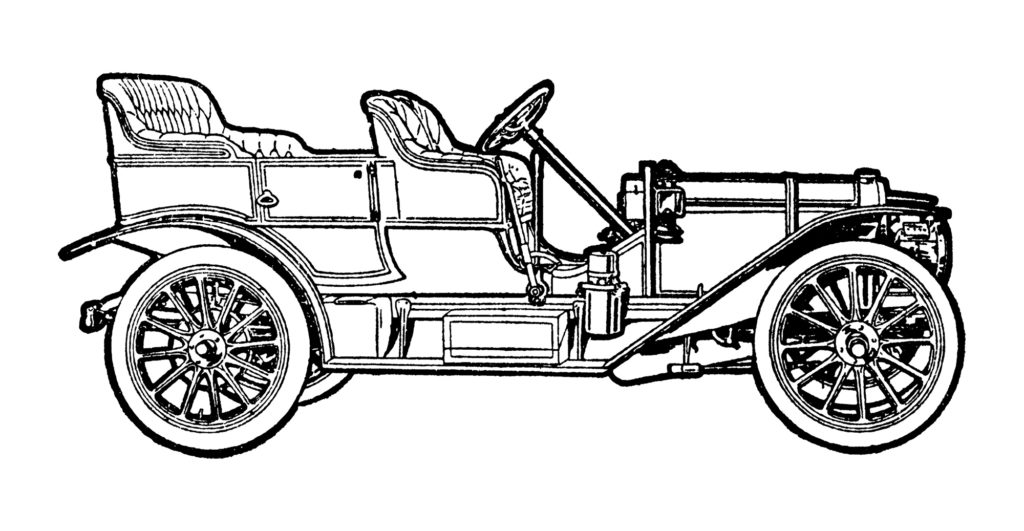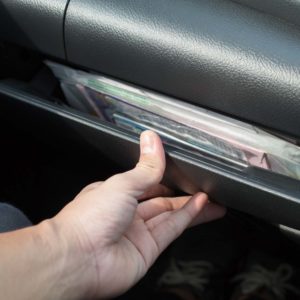Almost every vehicle nowadays comes with a glove compartment in the dashboard. Some of these storage containers even have an actual glove or two, and most of their owners stuff the hand garments somewhere easier to reach from the driver’s seat. But have you ever wondered where its name came from? Read on to find out why it is called a glove compartment.
The Old Dashboard and the First Storage Box
The glove compartment’s origins can be traced back to the storage box in early automobiles. That container replaced the original dashboard on the automobile’s predecessor, the horse-drawn carriage.
Before the advent of the automobile, the horse-drawn carriage served as one of the major means of ground transportation. And much like the driving tires in cars, horses can kick up water, mud, dirt, and debris when they are dashing at full speed.
Horse-drawn carriages have a board made of canvas or wood in front to keep their driver clean and dry. This panel is called the dashboard.
Early automobiles were more or less considered horseless carriages. They retained the dashboard, but they lacked many familiar parts, such as roofs, windshields, and windows.

The first storage box was invented by Packard Motor Car Company in 1900. The American company wanted to show its customers that automobiles were different from carriages. So the company’s designers replaced the now-useless dashboard with a waterproof storage box.
In time, the dashboard would eventually return as a control panel inside the car. Other car manufacturers installed drawers under the seats and other locations.
Why Is It Called A Glove Compartment?
It’s called a “glove compartment” because many automobile drivers used it to store their gloves. But why did they use gloves when driving?
Well, the first automobiles were not just open-air affairs that exposed their occupants to the elements. They also lacked power steering, so their drivers sometimes found themselves wrestling with the front wheels for control of their vehicle.
Fortunately, cars eventually abandoned tiller-style steering for a more updated control system by the time the future glove compartment showed up. The steering wheel was an improvement over the tiller, but it could get slippery because of moisture or sweaty fingers. It could also get hot or cold depending on the time of the day and the weather. And because drivers often needed to rotate the steering wheel forcefully, most of them formed calluses on their fingers.

To improve their grip, protect their fingers, and avoid calluses, drivers took to wearing protective gloves. Both men and women drivers wore gloves, which were usually made from soft yet strong material that made it easier to clutch the slippery surface of metal steering wheels.
Early driving gloves resembled gardening gloves more than they did modern gloves. They were big and bulky. Understandably, drivers usually left them in the car after parking. But leaving the gloves out in the open not only invited theft but also increased the risk of moisture getting inside them.
That’s where the storage container introduced by Packard in its cars came into play. Drivers had been using the compartment to store various items in the past. It made sense to store the driving gloves there. Thanks to widespread use, the storage container became known as the glove compartment.
The Evolution of the Glove Compartment
Driving gloves became unnecessary over the decades. Manufacturers introduced automobile heating systems toward the latter half of the 1930s. Thanks to this and other climate control features, drivers no longer need gloves to keep their hands comfortable.

While driving gloves became outdated, the glove compartment not only survived but thrived. Drivers and passengers alike found the small closet very convenient for storing various items.
The 50s and 60s saw car manufacturers try out new things with the glove compartment. For example, the 1957 Eldorado Brougham came with a cocktail set that fit inside the compartment. Later on, some glove compartment doors featured indentations that could hold beverage containers, an improvement over existing cupholders.
The flow of upgrades slowed down after the 60s. A lock became a standard issue for glove compartments in most cars, making it safer to entrust vehicles to valet parking. Some compartments also got concealed lights and buttons for releasing the fuel door or trunk.
The Modern Day Glove Compartment
Nowadays, the glove compartment serves as a handy storage container. Some manufacturers will continue to try new things, like how the Dodge Chill Zone turned the space into a refrigerator for drinks. Some opted for less egregious features like an audio-in jack or USB port. It might never hold another glove ever again, but the glove compartment is good for keeping your valuables safe.
Any information provided on this Website is for informational purposes only and is not intended to replace consultation with a professional mechanic. The accuracy and timeliness of the information may change from the time of publication.

















